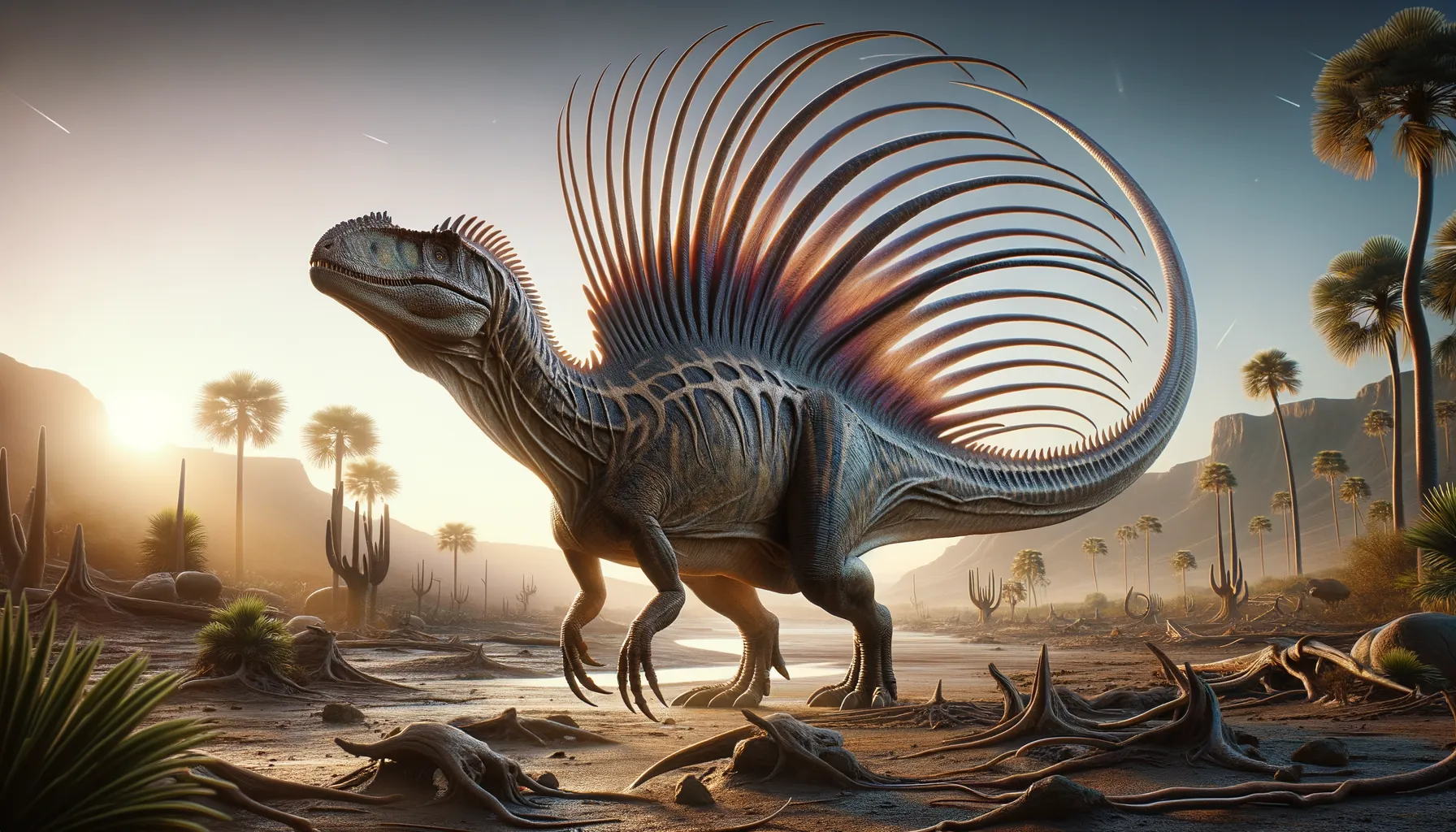
Ouranosaurus
Sail-backed giant of ancient Africa.
Period
Cretaceous
Length
Up to 23 feet long.
Height
Approximately 8 feet tall.
Weight
Around 4 tons.
Ouranosaurus was a fascinating herbivorous dinosaur known for its unique sail-like structure on its back. Living during the Early Cretaceous period, it roamed the terrains of what is now Africa. This dinosaur resembled modern iguanas in some ways, given its unique features. Its distinctive spine had elongated neural spines forming a sail or hump which might have been used for thermoregulation or display. Fossils found in Niger have provided valuable insights into its existence.
Diet
Ouranosaurus was a herbivore, feeding primarily on a variety of plants available during its era. It likely used its broad snout and leaf-shaped teeth to graze on low-lying vegetation.
Hunting
As a herbivore, it did not engage in hunting behaviors. Instead, its time was spent foraging for plants and avoiding predators.
Environmental challenges
During the Cretaceous period, Ouranosaurus faced myriad environmental challenges, including changing climates and landscapes. Predators were a constant threat, forcing them to remain vigilant. Their sail-like structure may have helped them survive temperature fluctuations by aiding in thermoregulation. These adaptations were vital for survival in a challenging and dynamic ecosystem.
Speed
Relatively slow mover.
Lifespan
Lived for around 20 to 25 years.
First discovery
Discovered in Niger in 1965.
Fun Facts
- Ouranosaurus was a dinosaur that lived around 125 million years ago during the early Cretaceous period.
- This dinosaur is known for its unique sail-like structure on its back, which may have been used for temperature regulation or display purposes.
- Ouranosaurus was a plant-eater (herbivore) and likely fed on a variety of vegetation using its beak and teeth specially suited for chewing plants.
- It was a relatively large dinosaur, estimated to be about 23 feet long, roughly the size of a large van.
- Fossils of Ouranosaurus have primarily been found in present-day Niger, Africa, revealing insights into the ancient ecosystems of the region.
- The name 'Ouranosaurus' means 'brave lizard' in Greek, reflecting the impressive appearance and size of this dinosaur.
- Ouranosaurus travelled on both two and four legs, showcasing its adaptability in moving through its environment.
Growth and Development
Ouranosaurus experienced growth similar to other herbivorous dinosaurs, with a rapid early development stage. As they aged, their growth slowed, and the distinctive sail developed fully, which may have played a role in maturity or mating. Fossil evidence helps us understand their bone structure and growth patterns through time. Growth rings in their bones suggest they had seasonal growth spurts.
Habitat
Ouranosaurus inhabited lush floodplains and semi-arid regions with access to ample vegetation. It thrived in environments where water sources were nearby but was adaptable to fluctuations in wet and dry seasons. The presence of other herbivores indicates competitive but cooperative environments. The fossil sites in Niger suggest a vibrant ecosystem with diverse plant and animal life.
Interaction with other species
Ouranosaurus likely coexisted with other herbivores and predators, such as large theropods, in a dynamic ecosystem. They may have formed herds for protection and social interaction, enhancing their survival against predators. Their sail could have been a visual signal to communicate with other members of their species. Interactions were complex and involved constant competition for resources and survival.
Natural lifespan
Ouranosaurus lived up to 25 years in the wild.
Reproduction
Ouranosaurus likely laid eggs, with nests being possible communal sites where protection was shared. Young Ouranosauruses, upon hatching, may have had some degree of parental care against predators. Such behaviors would have increased the survival odds of hatchlings in the wild. They reached reproductive maturity relatively early in their lifespan, ensuring the continuation of their species.
Social behaviour
This dinosaur might have exhibited social behaviors, possibly moving in groups to enhance survival against predators. These group dynamics could have involved complex communication techniques, facilitated by their distinct sail. The social structure would have been significant for mating rituals and protecting the young. They relied on each other to navigate environmental challenges, emphasizing cooperation.
Fossil locations
Fossils of Ouranosaurus have primarily been discovered in the Elrhaz Formation in Niger. These fossils have included relatively complete skeletons, providing detailed insight into its anatomy. The environment of the discovery site suggests a riverine ecosystem, giving clues to its lifestyle. Other potential fossil sites in Africa remain under-explored, hinting at future discoveries.
